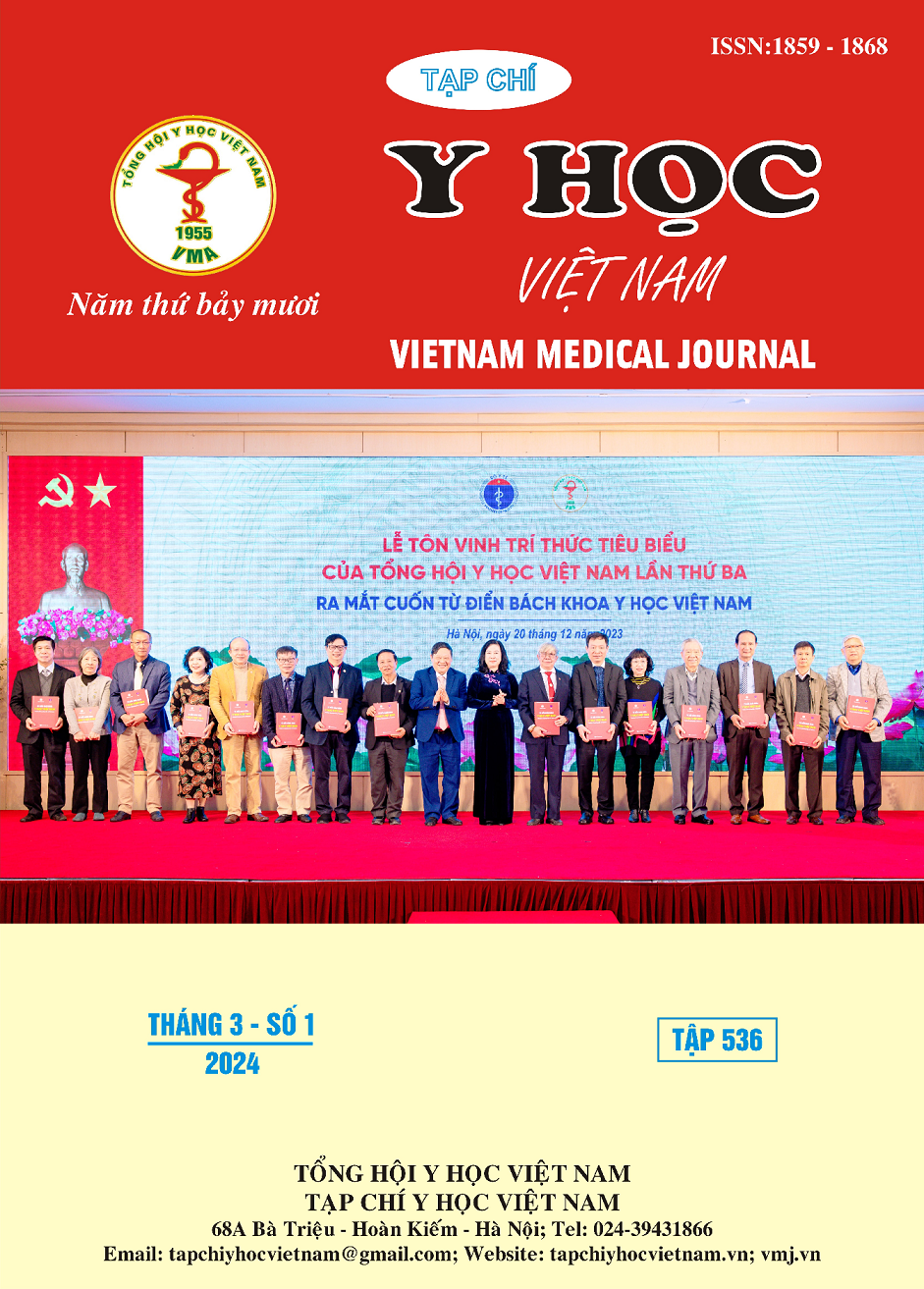A SURVEY ON THE USE OF CORTICOSTEROID EYE DROPS/ OINTMENTS OF PATIENTS BEFORE EXAMINATION AT VIETNAM NATIONAL EYE HOSPITAL
Main Article Content
Abstract
The survey was conducted by interviewing patients who waiting for their examination at Vietnam National eye hospital using a predesigned questionnaire. A total of 827 patients were interviewed, of which 153 patients (18.5%) had used the corticosteroid eye drops/ointments in the past 3 months. Almost haft of the patients (47.7%) used the medication without prescription out of the total 153 patients. Among them, the most cases bought the medication at the pharmacies (42.5%), followed by sharing with family members (2.6%) and self-purchasing based on old prescriptions (2.6%). Among the 827 patients, the percentage of patients who self-administration corticosteroid eye drops/ointments was 8.8%. In terms of selection, the combination of antibiotics and corticosteroids is commonly used (81.0%). Most patients used the drug for less than 2 weeks (73.2%). 89.5% of the patients did not know that the eye drops/ointments medication they used contained corticosteroids. 28.8% of the patients were unaware of the drug’s role in their disease. This proportion was higher in the group using the medicine without prescription than in the group using with a doctor's prescription (41.1% vs. 17.5%, p=0.01). 96.1% of patients did not know of any adverse effects of using ophthalmic corticosteroids. This study suggests that strategies should be developed to manage the seft-administration of corticosteroids and improve awareness, knowledge and attitudes of both people and healthcare workers at the pharmacies.
Article Details
References
2. Urban, R.C., Jr. and E. Cotlier, Corticosteroid-induced cataracts. Surv Ophthalmol, 1986. 31(2): p. 102-10.
3. Valerio, M., [THE HAZARDS OF PROLONGED LOCAL CORTISONE THERAPY]. Bull Mem Soc Fr Ophtalmol, 1963. 76: p. 572-80.
4. Gupta, N., et al., Use of traditional eye medicine and self-medication in rural India: A population-based study. PLoS One, 2017. 12(8): p. e0183461.
5. Sallam, A., et al., Knowledge, attitude, and practice analysis of corticosteroid use among patients: A study based in the United Arab Emirates. National Journal of Physiology, Pharmacy and Pharmacology, 2017. 7: p. 1.
6. Chris J. Cakanac, O.D. Topical Steroids 101. 2005; Available from: https://www.reviewofop tometry.com/article/topical-steroids-101.
7. Becker, B. and D.W. Mills, ELEVATED INTRAOCULAR PRESSURE FOLLOWING CORTICOSTEROID EYE DROPS. Jama, 1963. 185: p. 884-6.
8. Royal College of General Practitioners. Steroid and the eye Available from: https://www. rnib.org.uk/sites/default/files/GP%20factsheet%20-%20Steroids%20and%20the% 20eye.pdf
9. Duncan, K. and B.H. Jeng, Medical management of blepharitis. Curr Opin Ophthalmol, 2015. 26(4): p. 289-94.
10. Thuỷ, B.H., Đánh giá hoạt động của các nhà thuốc đạt nguyên tắc tiêu chuẩn GPP trên địa bàn thành phố Thanh Hóa tỉnh Thanh Hóa 2014, Trường đại học Dược Hà Nội.


